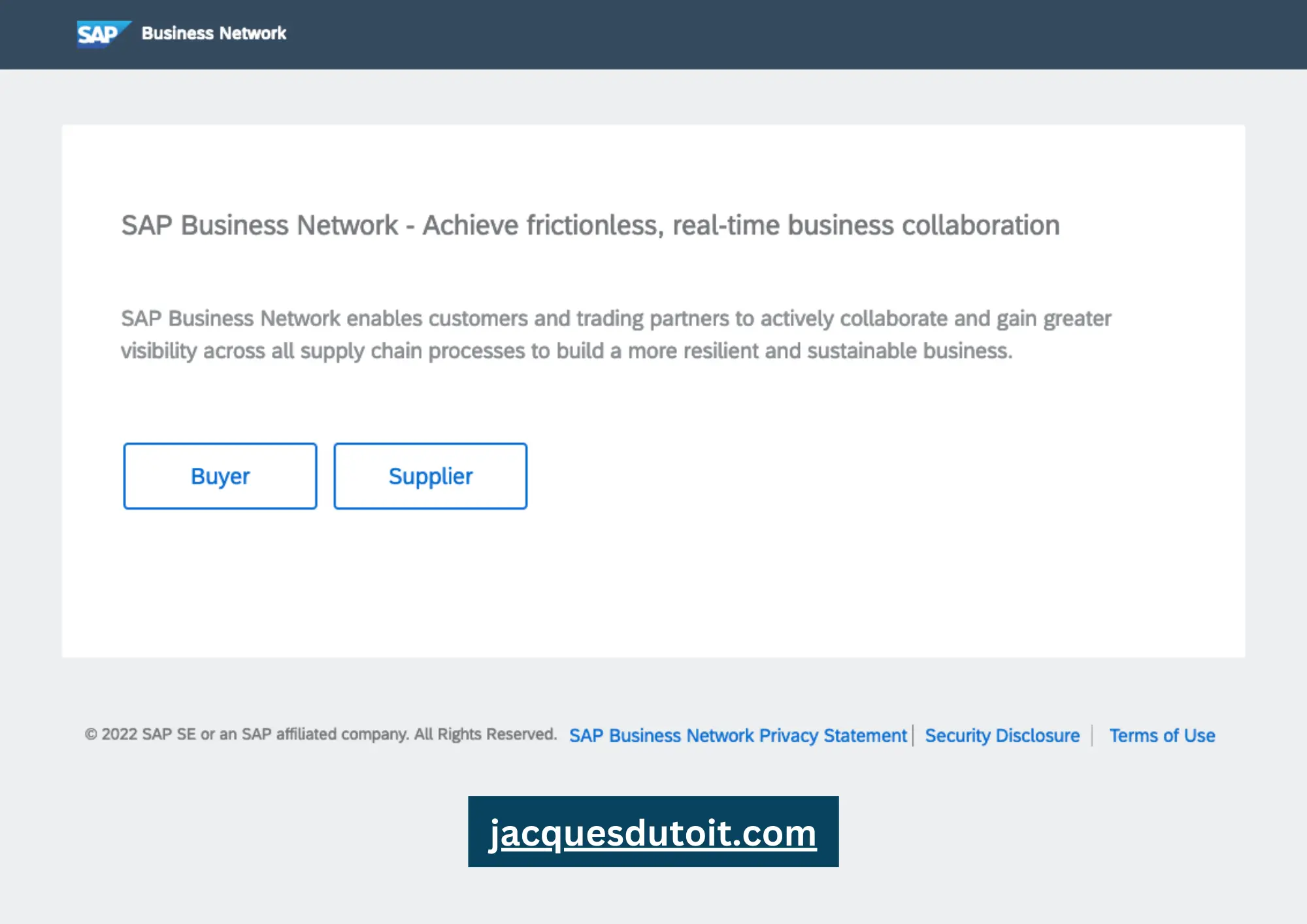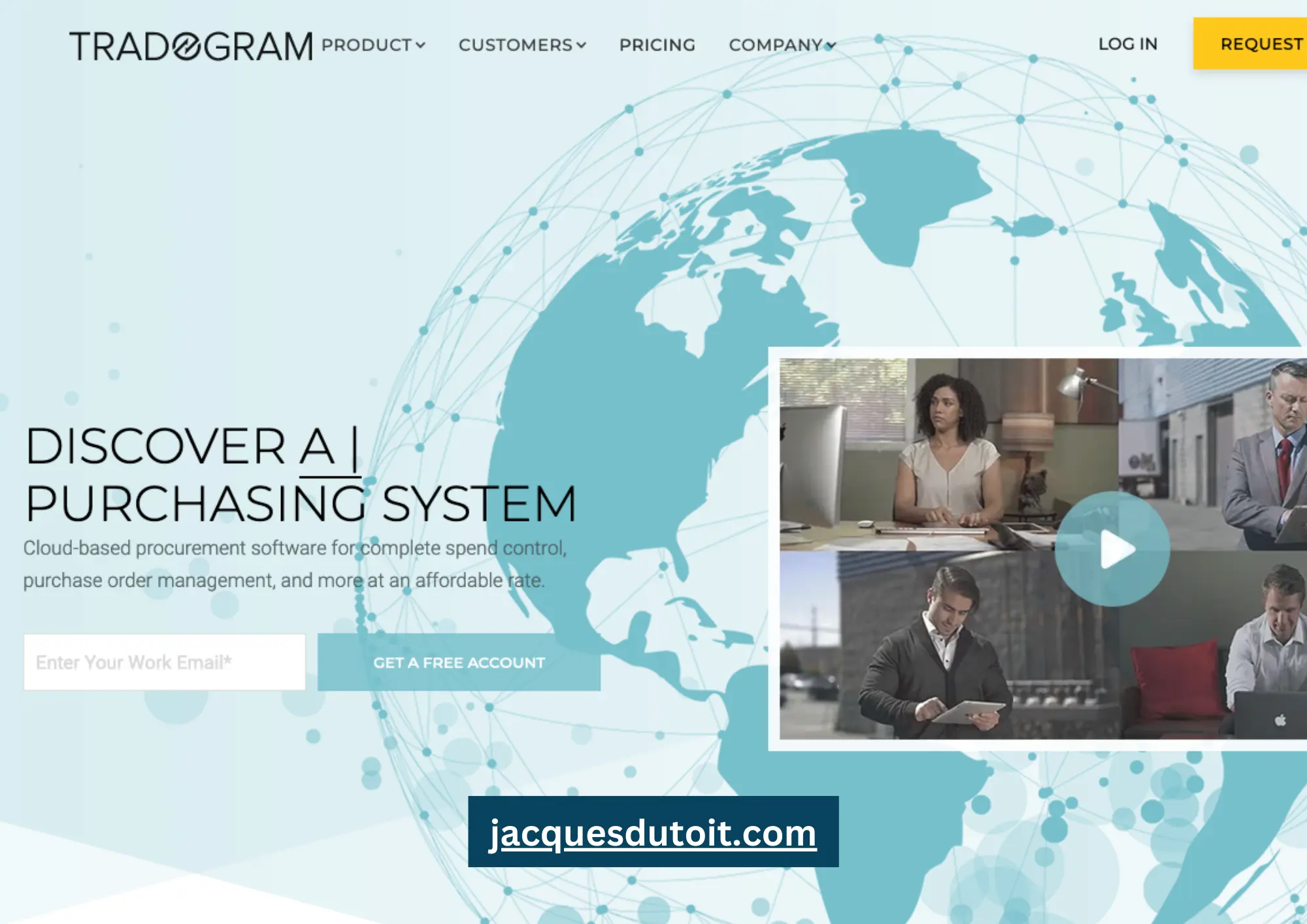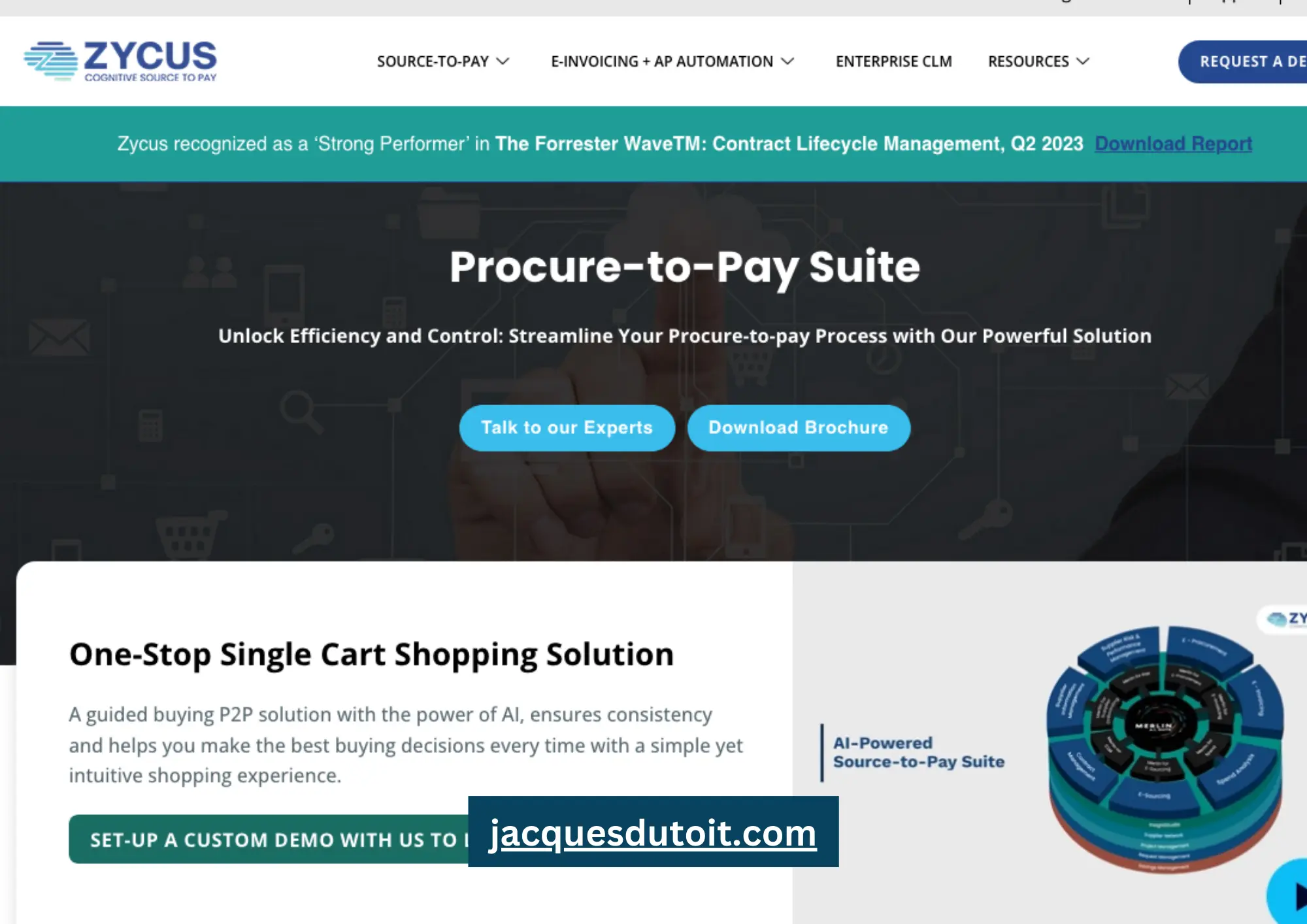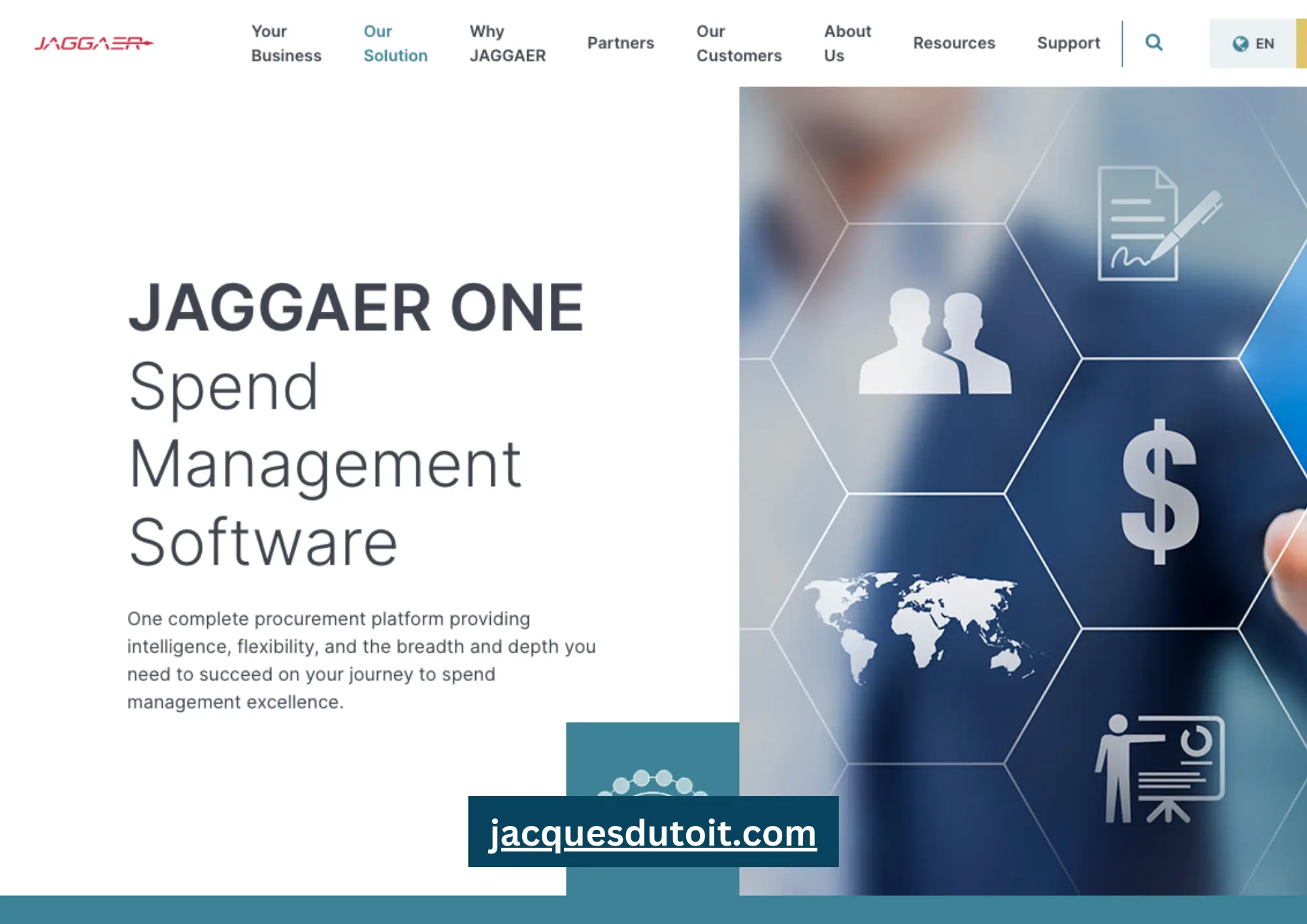In today’s competitive business environment, optimizing purchasing processes is crucial for success. Procurement management software has revolutionized the way organizations manage their procurement, offering numerous benefits such as cost reduction, increased efficiency, and improved visibility. This blog post will delve into the top 10 best procurement software solutions for 2023, guide you through choosing the right procurement software focuses, and explore the future trends in this rapidly evolving industry.
Short Summary
- Procurement management software is a powerful tool for businesses to streamline their purchasing processes.
- It provides numerous benefits such as faster delivery times, cost savings and increased efficiency.
- Careful evaluation of organizational needs and available software features is essential when selecting the right solution for long-term success.
Understanding Procurement Management Software

Procurement management software is an essential tool for businesses looking to optimize their purchasing processes. It automates various procurement processes, from sourcing to supplier selection, contract negotiation, and payment, ensuring that your organization can make informed decisions that promote efficiency.
With a plethora of software and procurement solutions now available in the market, it is crucial to understand the key components and benefits of procurement management software to make the right choice for your organization.
Key Components

The core components of procurement management software include spend analysis, supplier management, and contract management. Spend analysis provides valuable insights into your organization’s spending patterns, allowing you to identify cost-saving opportunities and streamline your procurement processes. Supplier management ensures that you maintain strong relationships with your suppliers, improving the overall efficiency of your supply chain. Contract management facilitates the negotiation and management of contracts, ensuring that your organization gets the best deals while minimizing risks.
In addition to these core components, procurement management software often includes features such as automated workflows, mobile functionality, and customizable templates. These features not only save time by automating time-consuming manual procedures but also contribute to a more efficient and effective procurement process. With its wide range of functionalities, procurement management software is an indispensable tool for any organization seeking to optimize their purchasing processes.
Benefits
The benefits of utilizing procurement management software are numerous. By automating and streamlining procurement processes, organizations can experience faster delivery times, economies of scale, increased efficiency, and reduced overall costs.
Spend analysis tools help identify areas of spending that deviate from established protocols, reducing risk and ensuring compliance. Furthermore, procurement software allows for a single source of truth, ensuring that no data discrepancies occur across all processes and workflows, resulting in a more efficient and accurate purchasing process.
Top 10 Procurement Management Software Solutions for 2023

As the procurement landscape continues to evolve, it is essential to stay ahead of the curve by adopting the best procurement software solutions. In this section, we will explore the top 10 procurement management software solutions for 2023: Precoro, Coupa Procurement, SAP Ariba, Oracle Procurement Cloud, ProcurePort, Procurify, Tradogram, Zycus Procure-to-Pay Suite, JAGGAER ONE, and Bellwether Purchasing Software.
These solutions offer a range of features and functionalities designed to optimize your procurement processes and help your organization achieve its goals.
Solution 1: Precoro

Precoro is a procure-to-pay solution that streamlines the procurement process by minimizing approval bottlenecks. Its key features include approval routing, three-way matching, user role controls, several request features (purchase requisition, request for proposal, warehouse request, invoice payment request, request reimbursement) and full expense management and tracking. Additionally, it offers cost allocation and web and mobile access. Precoro has been chosen as one of the top procurement management software solutions by GetApp, Capterra, Software Advice, and G2.
Precoro also integrates seamlessly with several Accounting (Quickbooks and Xero), ERP (NetSuite), Purchasing (Amazon Business), Collaboration (Slack), Security (Single sign on) and Analytics (Power BI) solutions. You can also create integrations for other solutions with the help of the Precoro team. With a setup time of approximately two weeks, Precoro offers a quick and efficient way to optimize your organization’s procurement process.
Watch this video on What is Precoro? | Procurement Software Demo by Precoro
Solution 2: Coupa Procurement

Coupa Procurement is a cloud-based Business Spend Management platform that helps organizations manage their business spending across procurement, supply chain, and finance. Its user-friendly interface guides employees through the buying process and highlights preferred products and services in search results, notifying them of discounted pricing.
Coupa Procurement offers features such as purchase requisitions, budget tracking, fraud detection, and spend management, making it an ideal choice for organizations looking to optimize their procurement processes.
Solution 3: SAP Ariba

SAP Ariba, a spend management software solution portfolio acquired by SAP in 2012, provides companies with the ability to purchase smarter, expedite sales, and optimize cash flow in the digital economy. With on-demand and subscription-based pricing, SAP Ariba offers integrations with existing systems such as ERP software and supplier and vendor support tools, making it a comprehensive and versatile procurement management software solution.
Solution 4: Oracle Procurement Cloud

Oracle Procurement Cloud is an integrated source-to-settle suite that automates business processes, enabling strategic sourcing and improving supplier management. It provides comprehensive direct and indirect sourcing, purchasing, and supplier management capabilities across any modern supply chain management system.
Its key features include automated purchase orders, invoicing, budgeting, and inventory management, making it a powerful procurement management software solution.
Solution 5: ProcurePort

ProcurePort is a cloud-hosted purchasing solution designed to help organizations optimize their procurement processes, including invoicing, expenses, inventory, and budgeting. Its key features include automated purchase orders, invoicing, budgeting, and inventory management.
ProcurePort offers enhanced efficiency, cost reduction, and increased visibility into procurement processes, making it an ideal choice for organizations looking to improve their procurement management.
Solution 6: Procurify

Procurify is a cloud-based procurement software platform that offers real-time visibility and control over all business spending. It facilitates the management of the procurement cycle from order to payment, with features such as purchase order management, vendor management, budgeting, and analytics.
Procurify also provides tools for tracking and managing spend, as well as automating the procurement process, making it an efficient and effective procurement management software solution.
Solution 7: Tradogram

Tradogram is a cloud-based procurement management software solution used by companies globally to facilitate their spend management, purchasing, and procurement processes. It offers customizable tools to optimize requisitions, purchase orders, RFQs/RFPs, contracts, receiving, and invoice matching.
With its suite of analytics and reporting tools, Tradogram enables users to gain insights into their procurement processes, making it a valuable tool for any organization seeking to optimize their purchasing procedures.
Solution 8: Zycus Procure-to-Pay Suite

The Zycus Procure-to-Pay Suite is a cloud-based software solution that simplifies the procurement process and provides a user-friendly shopping interface. It is part of the Zycus procurement suite that is suitable for businesses in various industry verticals. It includes features such as automated requisitioning, purchase order management, invoice processing, and analytics.
Additionally, Zycus Source-to-Pay is a procurement software that leverages AI to optimize the procurement process and boost efficiency.
Solution 9: JAGGAER ONE

JAGGAER ONE is a unified platform for procurement management that offers data management, third-party integrations, identity management, process workflows, and analytics to facilitate all procurement functions. With its range of features and functionalities, JAGGAER ONE provides improved data management, streamlined processes, enhanced visibility into procurement activities, and improved analytics, making it an ideal choice for organizations looking to optimize their procurement processes.
JAGGAER ONE offers a comprehensive suite of tools to help organizations manage their procurement processes more efficiently. It provides a centralized platform for data management, third-party integrations, identity management, process workflows, and analytics. This allows organizations to gain better visibility into their operations.
Solution 10: Bellwether Purchasing Software

Bellwether Purchasing Software is a procurement management solution designed specifically for small and mid-sized businesses. It helps to reduce costs, gain control over spending, and improve efficiency through features such as requisitions, procurement tracking, inventory management, and contract management.
With its range of features and benefits, Bellwether Purchasing Software is an excellent choice for organizations looking to optimize their procurement processes.
Choosing the Right Procurement Management Software
To choose the right procurement management software for your organization, it is essential to assess your organization’s unique needs, evaluate the features and functionality of various software solutions, and consider integration and scalability. By doing so, you can ensure that the software you select meets your specific requirements and can grow with your organization over time, helping you optimize your purchasing processes and achieve your business goals.
Assessing Organizational Needs
When evaluating your organization’s needs, it is important to consider the resources available to you, such as personnel, technology, and processes, as well as any potential limitations. Collect both internal and external data, including customer feedback, market trends, and competitor analysis, to gain a comprehensive understanding of your organization’s unique requirements.
Once the data has been collected, use it to solicit feedback, disseminate the findings, and execute the procedures necessary to satisfy your organization’s needs.
Evaluating Features and Functionality
As you assess the features and functionality of various procurement software solutions, it is essential to ensure that they meet your organization’s specific needs. Look for features such as purchase order creation, purchase order software, supplier management, inventory tracking, budget management, spend analysis, and contract management, as well as any additional functionalities that may be relevant to your organization.
Additionally, consider the user-friendliness and integration capabilities of the software, as these factors can greatly impact the success of your implementation.
Considering Integration and Scalability
When selecting procurement management software, it is important to consider integration and scalability. Integration ensures that the software can collaborate with your existing systems, streamlining processes and optimizing efficiency.
Scalability guarantees that the software can accommodate increased workloads or user numbers without reducing performance or incurring extra costs. By considering these factors, you can select a procurement management software solution that will grow with your organization and help you achieve your business goals.
Implementation Strategies for Success
Successful implementation of procurement management software requires a well-thought-out project plan, adequate training and adoption, and the ability to measure success. By following these strategies, you can ensure that your organization maximizes the benefits of your procurement management software, ultimately leading to cost savings, increased efficiency, and improved visibility into your procurement processes.
Developing a Project Plan
A comprehensive project plan is essential when implementing procurement management software. Be specific and concise in your goals and activities, and ensure that all involved parties are included in the planning process. Consider potential risks and how to address them, and establish achievable timelines to monitor progress throughout the project.
By creating a solid project plan, you can set your organization up for success in implementing procurement management software.
Training and Adoption
Proper training and adoption are critical to the successful implementation of procurement management software. Provide users with clear instructions and guidance, ensure that the software is user-friendly, and offer ongoing support and training.
Additionally, it is important to ensure that the software is integrated with your existing systems and processes and that users are comfortable with the new procurement management system. By focusing on training and adoption, you can ensure a smooth transition to your new procurement management software.
Measuring Success
Measuring the success of your procurement management software implementation is an important part of the process. Monitor key metrics such as procurement cycle time, vendor performance, spend under management, cost savings, and the percentage of purchase orders that are catalog-based to gauge the success of your implementation.
By tracking these metrics, you can ensure that your organization procurement platform is achieving the desired benefits and optimizing your procurement processes.
Future Trends in Procurement Management Software

As technology continues to evolve, we can expect to see new trends in procurement management software, such as the integration of artificial intelligence and machine learning, blockchain technology, and mobile and remote capabilities.
By staying informed about these emerging trends and incorporating them into your procurement management software, you can ensure that your organization remains ahead of the curve and is prepared to take advantage of new opportunities to optimize your purchasing processes.
Artificial Intelligence and Machine Learning

Artificial intelligence and machine learning are poised to revolutionize procurement management software, automating and optimizing processes such as contract negotiation and supplier selection. AI-driven algorithms can analyze data and recognize patterns, identifying potential areas for improvement and providing insights into supplier relationships.
By leveraging AI and ML in your procurement management software, you can reduce costs, increase accuracy, and optimize efficiency in your purchasing processes.
Blockchain Integration
Blockchain integration holds significant potential for improving procurement management software by enhancing security and visibility in procurement processes. Distributed ledger technology can streamline procurement processes, reduce the risk of fraud, and provide increased transparency.
However, integrating blockchain technology can be complex and requires specialized knowledge and resources, as well as a clear understanding of the potential benefits and challenges.
Mobile and Remote Capabilities
Mobile and remote capabilities are becoming increasingly important in procurement management software, enabling procurement managers to access their software from any location and at any time. This increased accessibility allows for more efficient and effective management of procurement processes and enables organizations to respond more quickly to changing needs and requirements.
By incorporating mobile and remote capabilities into your procurement management software, you can enhance efficiency and stay ahead of the competition.
Frequently Asked Questions about Procurement Management Software
What is Procurement Management Software?
Procurement management software is a tool that helps organizations manage the purchasing process, from sourcing and supplier selection to contract negotiation and payment. It automates various procurement processes, enabling organizations to make more informed decisions and promote efficiency.
With a wide range of procurement management software solutions available in the market, it is essential for businesses of all sizes to choose the right procurement solution, to optimize their purchasing processes and achieve their goals.
Watch this video on What Is Procurement Software? by NetSuite
For who is Procurement Management Software?
Procurement management software is suitable for businesses of all sizes, from small businesses to large enterprises, as well as government agencies and non-profit organizations. By automating and streamlining procurement processes, procurement software can offer increased reporting capabilities on orders, purchases, invoices, and payments, improved spend management, automation of tasks and approvals, real-time spend visibility, and expedited turnaround time.
It can also help to reduce fraud, manage budgets, and cut costs across various industries and organizations.
Which procurement software is best?
Considering the expert advice provided, it seems that Oracle’s NetSuite and Coupa Supply Chain Management are two of the best procurement software solutions available. These two systems offer comprehensive features to meet various procurement needs, allowing for maximum efficiency and reliability in financial operations.
What is SAP for procurement?
SAP for procurement is an integrated software that streamlines the entire source-to-pay process, including purchase requisitioning, catalog buying, order processing, receiving, invoice processing, contract management, and sourcing. It helps create efficiencies across all spend categories and minimizes supply risks with improved supplier selection while providing visibility into pricing and forecasting.
What systems are used in procurement?
Procurement management systems are invaluable tools for efficient and effective operations. Popular, accounting systems can include e-procurement, contract management, tendering, supplier relationship management, purchasing management, inventory management, and spend analytics.
Each system offers different capabilities that can optimize the procurement process for businesses of all sizes.
What is a procurement system?
A procurement system is an invaluable tool for businesses, as it helps streamline and automate the entire purchasing process. It manages purchase orders, vendor selection and management, and inventory control to ensure that companies are getting the best value from their purchases.
By automating these processes, procurement systems can save time and money.
Conclusion
In conclusion, procurement management software has solidified its position as an invaluable tool, indispensable for businesses of all sizes aiming to streamline their purchasing processes, curtail costs, and enhance efficiency. When the right software solution is meticulously chosen and effectively implemented, it enables organizations to fine-tune their procurement processes. This not only provides a competitive edge but also paves the way toward the achievement of overarching business goals. The tangible benefits include time and money savings, resulting in increased profits and a healthier bottom line. This ultimately contributes to an organization’s sustained competitiveness in the marketplace.
In summary, procurement management software is fundamental to optimizing purchasing processes and propelling business success. The top-tier procurement software solutions in 2023 are equipped with a broad spectrum of features and functionalities tailored to suit organizations of varied sizes. The selection of the right procurement software vendors should be coupled with a thorough assessment of organizational needs, a careful evaluation of features and functionality, and due consideration of integration and scalability. This ensures that the procurement management software aligns with specific requirements and helps in the accomplishment of business objectives. Embrace future trends in procurement management software, and stay ahead of the curve to guarantee your organization’s success in the years to come.
Also read
What is Procurement Management Software and What Benefits Does it Offer?
Precoro Procurement Management Software Review 2023
The 2023 Financial Crisis is here. Be prepared.
How to Start an Airbnb Business in 5 Easy Steps — The Definitive Guide
P.S. Want to know when my next article lands? Sign up below.








